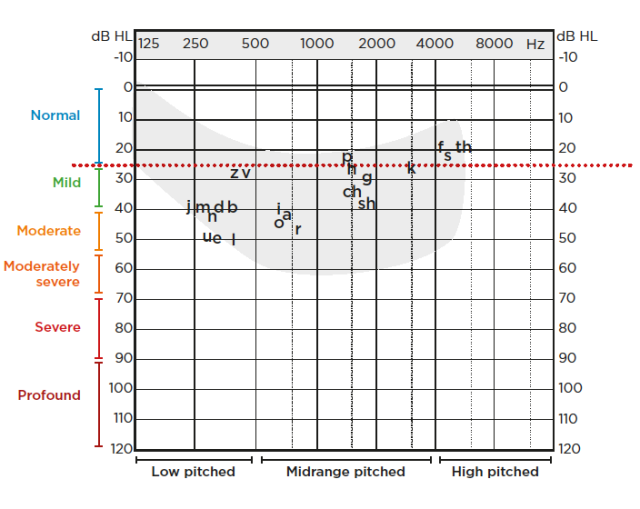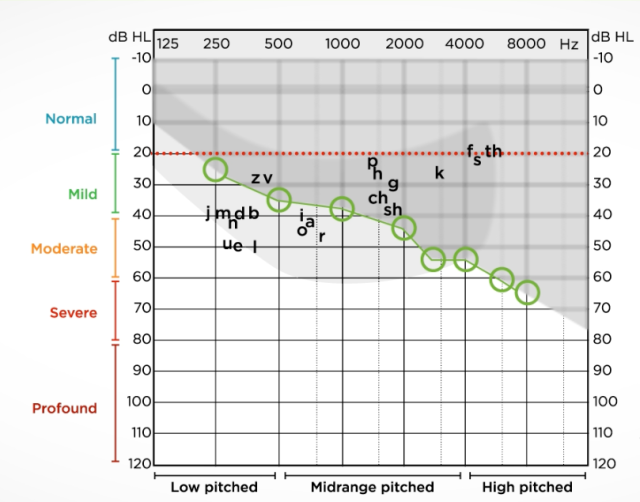
Why do I hear, but I don’t understand what is being said
Most of the time, hearing loss tends to develop subtly and gradually over the years. This can happen without us realizing it. It is often high-pitched sounds that are first affected by our hearing loss.
But losing those famous high-pitched sounds, why does that matter?
What is the speech banana?
The audiologist, the professional who evaluates your hearing, has various tools to explain your hearing results, including the speech banana.
The speech banana is a term used to illustrate the area where speech sounds occur at a conversational level. It’s represented on an audiogram which is the graph that shows a person’s hearing following a hearing examination carried out by an audiologist.
The audiogram represents the smallest sounds a person can hear at different important frequencies for speech comprehension.
The speech banana gets its name because speech sounds depicted on an audiogram form a banana as shown on the graph below.

Frequency means the pitch of sounds, i.e. low, medium or high sounds. Generally speaking, vowels are lower and consonants higher.
Frequencies are measured in Hertz (Hz) and are represented as on a piano, from low sounds on the left to higher sounds on the right.
The audiogram measures the sound intensity of each frequency in decibels (dB). The further down the graph we go, the louder the sound must be to be heard.
How Does Hearing Loss Impact the Speech Banana?
In the audiogram below, the example of a hearing curve (green circles linked together by a line) demonstrates that the person hears low-pitched sounds well, but not high-pitched sounds.
Thanks to the speech banana, we observe that this person can hear most speech sounds, but not all of them. They will have difficulty hearing for example the following consonants: “f”, “s” or “ch”. So they might confuse the words “skin” and “him” or “fat” and “hat.”
Speech banana is only visible on an audiogram.

If in doubt, it’s important to consult an audiologist.
Book an appointment now: Click here to find the clinic nearest you
BY Catherine Sabourin, Audiologist, Polyclinique de l’Oreille





